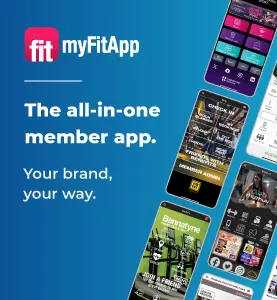It’s very clear that leadership is becoming a perennial issue for British companies, yet few feel they’re making progress in addressing it.
According to Deloitte’s UK 2015 Human Capital Trends survey, almost nine in 10 cite leadership as one of their biggest challenges. This makes it the most pressing concern for companies for the third year running.
Half of UK organisations say their succession plans are not clear and current, yet only eight per cent believe their leadership pipeline is “excellent” to address the problem. The issue among Millennial leaders (people born after 1982) is particularly prevalent, as only six per cent declare they have “excellent” programmes in place for their professional development.
This in spite of the fact that, by 2025, Millennials will represent 75 per cent of the workforce. Combined with the fact that four million Baby Boomers are retiring each year, it’s clear that Millennials will become ever more important to the workforce, shaping the talent and leadership agenda.
This issue is particularly key to the health and fitness industry, which has a generally younger workforce than many other industries. These organisations must ensure they invest in this generation’s development or risk the future leadership of the industry.
Lack of engagement
An organisation’s culture – defined as employee engagement, meaningful work, strong leadership importance, and job and organisational fit – has risen as a key issue for companies worldwide. The talent themselves, particularly Millennials, are helping drive this change. Indeed, in another recent Deloitte survey, 78 per cent of Millennials cited working for an innovative organisation as a reason for selecting an employer.
But in the UK alone, fewer than 20 per cent of organisations surveyed for this year’s Human Capital Trends believe they can clearly define their culture, and communicate and measure it. As a result, eight out of 10 respondents said they had a lack of employee engagement.
Outdated processes such as annual performance reviews and unnecessarily complicated work environments are factors that are likely to be driving this disengagement. Companies need to look at their ‘offer’ to employees, and ensure it’s updated to reflect the employment experience that the workforce demands. In areas such as talent acquisition and retention, businesses must revamp their approach to secure and maintain an engaged workforce.
The wider talent pool
There’s little doubt that contingent workers, such as the self-employed and contractors, are of fundamental importance to the health and fitness industry. Allowing companies to have fast access to a network of seasoned professionals such as personal trainers or fitness instructors, the use of ‘on-demand’ talent is also now growing in popularity throughout the rest of the UK’s workforce. Across all sectors, six out of 10 companies reported that their need for such workers will continue to grow over the next three to five years. This is almost 10 per cent higher than the global average.
As many of these contingent workers are not currently integrated into companies’ HR systems, if they want to engage and retain these professionals, organisations must think about how their talent programmes, processes, strategies and analytical tools will translate across a diverse employment base. The model requires unified management and risk controls across the contingent and traditional employee bases. Companies who don’t do this risk alienating this vital talent pool.
Learning and development
The employment experience is impacting learning and development, which has become a more serious talent challenge for UK organisations. The issue has grown from the 11th most important in 2014 to become the fourth biggest challenge this year. Indeed, over seven in 10 survey participants rated learning as a “very important” or “important” problem. Learning capabilities also dropped significantly, as the ‘capability gap’ – the difference between the survey’s importance index and readiness index – has nearly doubled in the past year, from 12 to 20.
The lack of investment in learning during the period of austerity has greatly impacted health and fitness providers, who, as discussed, are facing issues in leadership, trying to manage high levels of contingent workers, and yet still need to engage with their diverse employee base. In order to help workers mature skills that are not only important to the business’ success, but that also develop meaningful careers that engage and retain talent, close attention to learning and development is essential.
Driving change
In all, 87 per cent of organisations are planning to transform their HR functions in the next three years – yet fewer than one in 10 business leaders believe HR has the capability to transform itself. To the business, HR’s administrative function is just table stakes. It’s actually about how HR drives value to the business that really count – how its interventions enable greater efficiency.
Executives should see HR as a key player in the development of business strategy. HR and its leaders need to be bold, agile, business-integrated, data-driven and deeply skilled in attracting, retaining and developing talent.
This can all happen, but only with a proactive makeover. The health and fitness industry holds one of the most diverse employee bases in the UK, and the HR function in these organisations must adapt to help their businesses thrive in the new world of work.

























































